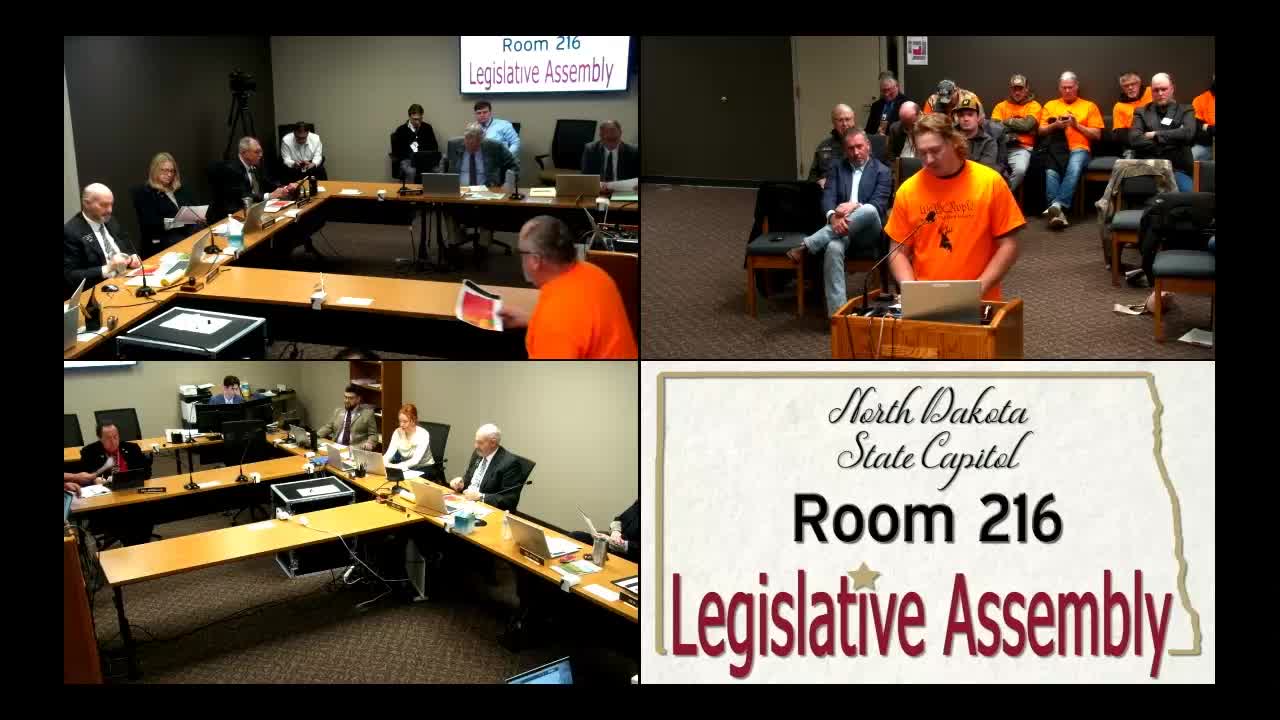North Dakota hunters challenge CWD restrictions amid rising deer population concerns
January 17, 2025 | Agriculture and Veterans Affairs, Senate, Legislative, North Dakota
This article was created by AI summarizing key points discussed. AI makes mistakes, so for full details and context, please refer to the video of the full meeting. Please report any errors so we can fix them. Report an error »

During a recent meeting of the Senate Agriculture and Veterans Affairs Committee in North Dakota, significant discussions centered around Chronic Wasting Disease (CWD) and its management in the state's deer population. The meeting highlighted concerns regarding the effectiveness of current hunting restrictions and the implications for local hunters and landowners.
One of the primary topics was the hunting unit 3F2, where CWD was first identified in North Dakota in 2009. Since then, the North Dakota Game and Fish Department has implemented restrictions on supplemental feeding in this area. However, data presented during the meeting revealed that 61% of all CWD-positive deer killed by hunters between 2009 and 2022 came from this unit. Notably, a spike in positive cases occurred between 2019 and 2022, raising questions about whether the restrictions have effectively slowed the disease's spread.
Critics of the current management strategy argued that the department's decision to shift surveillance efforts away from unit 3F2, despite the significant data collected there, undermines the credibility of their approach. Testimonies from local hunters and landowners expressed frustration over perceived inconsistencies in the department's adherence to its own scientific guidelines, particularly regarding hunting restrictions and culling practices.
Another key point raised was the allocation of hunting tags for CWD culling. The Game and Fish Department's response indicated that they do not specifically allocate tags for this purpose, relying instead on various factors to determine license numbers. This has led to concerns that the department is using hunters to manage deer populations without transparent communication about the rationale behind these decisions.
Supporters of Senate Bill 2137, which seeks to allow hunting over supplemental feed year-round on private land, argued that such measures would benefit both wildlife and local sportsmen. They emphasized the importance of private landowners in maintaining the state's deer herd and called for a reevaluation of the current restrictions, suggesting that they may do more harm than good.
As the committee continues to deliberate on these issues, the outcomes of this meeting could have lasting implications for hunting practices and wildlife management in North Dakota. The discussions reflect a broader community concern about balancing wildlife health with the interests of hunters and landowners, highlighting the need for clear and consistent policies moving forward.
One of the primary topics was the hunting unit 3F2, where CWD was first identified in North Dakota in 2009. Since then, the North Dakota Game and Fish Department has implemented restrictions on supplemental feeding in this area. However, data presented during the meeting revealed that 61% of all CWD-positive deer killed by hunters between 2009 and 2022 came from this unit. Notably, a spike in positive cases occurred between 2019 and 2022, raising questions about whether the restrictions have effectively slowed the disease's spread.
Critics of the current management strategy argued that the department's decision to shift surveillance efforts away from unit 3F2, despite the significant data collected there, undermines the credibility of their approach. Testimonies from local hunters and landowners expressed frustration over perceived inconsistencies in the department's adherence to its own scientific guidelines, particularly regarding hunting restrictions and culling practices.
Another key point raised was the allocation of hunting tags for CWD culling. The Game and Fish Department's response indicated that they do not specifically allocate tags for this purpose, relying instead on various factors to determine license numbers. This has led to concerns that the department is using hunters to manage deer populations without transparent communication about the rationale behind these decisions.
Supporters of Senate Bill 2137, which seeks to allow hunting over supplemental feed year-round on private land, argued that such measures would benefit both wildlife and local sportsmen. They emphasized the importance of private landowners in maintaining the state's deer herd and called for a reevaluation of the current restrictions, suggesting that they may do more harm than good.
As the committee continues to deliberate on these issues, the outcomes of this meeting could have lasting implications for hunting practices and wildlife management in North Dakota. The discussions reflect a broader community concern about balancing wildlife health with the interests of hunters and landowners, highlighting the need for clear and consistent policies moving forward.
View full meeting
This article is based on a recent meeting—watch the full video and explore the complete transcript for deeper insights into the discussion.
View full meeting
